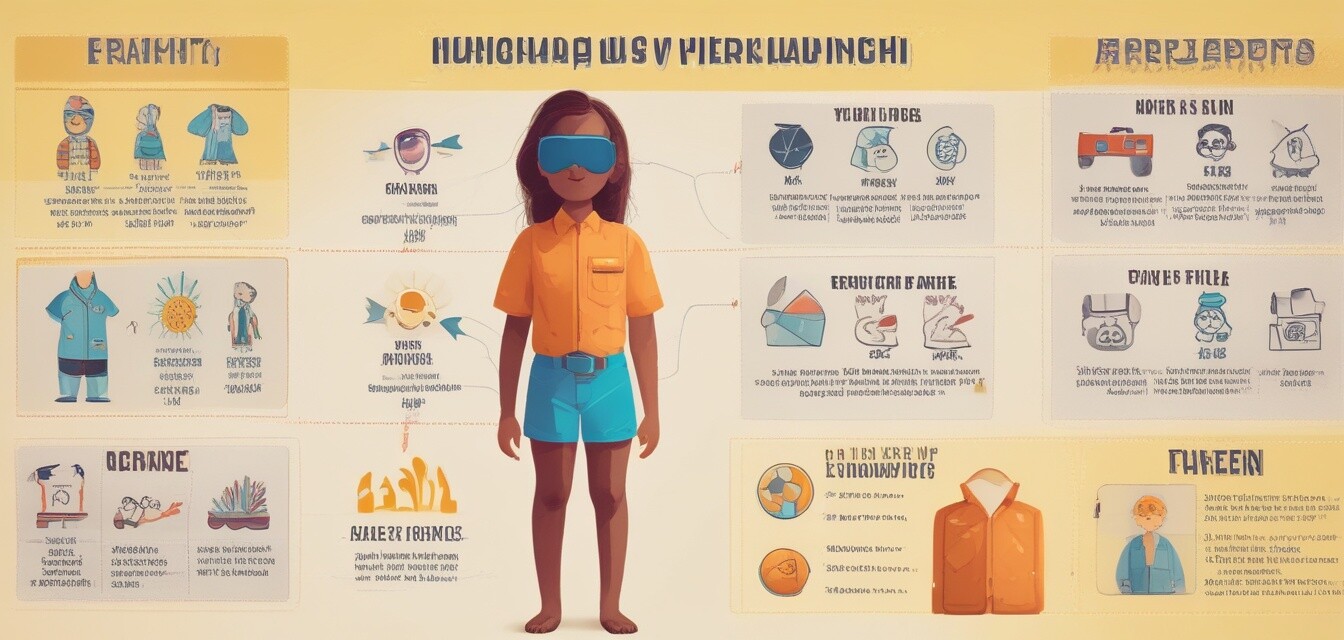
How to educate kids on UV protection while outdoors
Key Takeaways
- Understanding UV radiation is crucial for children’s sun safety.
- Incorporate fun activities to teach kids about UV protection.
- Use UV protective clothing as a primary defense against sun exposure.
- Model sun-safe behavior, so children learn by example.
- Educate through stories and games, making learning enjoyable.
The importance of sun protection cannot be overstated, especially for children who are more susceptible to harmful UV rays. In today's world, raising awareness about the significance of UV protection is necessary. Here, we’ll offer practical strategies for teaching kids about UV safety in an engaging and enjoyable manner.
Understanding UV radiation
UV radiation comes in two forms that affect the skin—UVA and UVB rays. Understanding these helps make informed decisions about outdoor activities.
- UVA rays: Can penetrate deeper into the skin and cause long-term skin damage.
- UVB rays: Mainly responsible for causing sunburn.
Why it matters for kids
Children are particularly vulnerable to the sun's rays, which is why educating them about UV protection is essential. Teach them the following:
- **The risks of sun exposure** - Explain that too much sun can damage their skin and lead to other health problems.
- **Importance of protective gear** - Highlight how clothing, hats, and sunglasses help shield them from harmful rays.
Tips for teaching kids about UV protection
Here are some effective strategies you can use:
Engaging activities
- Crafting a UV wristband: Create simple wristbands that change color when exposed to UV rays. This hands-on activity visually demonstrates how UV rays can be harmful.
- Storytime with a sun safety theme: Choose children's books emphasizing sun safety. Reading stories about sun protection helps reinforce the message.
- Outdoor games: Incorporate games where children must find "hidden suns" and earn rewards for wearing sun-safe clothing.
Modeling sun-safe behavior
Children learn a lot by observing adults. Thus, consistently model sun-safe behaviors:
- Wear UV protective clothing when outdoors.
- Apply broad-spectrum sunscreen on yourself and the children.
- Take breaks in the shade and explain the importance of these actions.
Establishing sun safety routines
Routines ensure that UV protection becomes second nature to children. Consider the following:
| Routine | Details |
|---|---|
| Before going outside | Check the UV index and explain what it means for their safety. |
| Daily wardrobe | Select UV protective clothing for outdoor activities. |
| Fun break reminders | Set timers for regular breaks in shaded areas to reinforce habit. |
| Family sun safety discussions | Discuss sun safety as a family, creating a shared understanding. |
Choosing the right UV protective clothing
When selecting clothing for protection against UV rays, keep in mind the following:
- UPF rating: Look for clothing with a UPF (Ultraviolet Protection Factor) of 30 or higher.
- Fabric type: Choose tightly woven fabrics, which offer better protection.
- Color: Darker colors often provide better UV protection compared to lighter colors.
Popular styles for kids
Consider exploring various styles available in UV protective clothing:
- Hats: Broad-brimmed hats to protect the face and neck.
- Swimwear: Rash guards with long sleeves.
- Active wear: Lightweight long-sleeve shirts for outdoor sports.
Real-world applications of UV protection education
Teaching kids during real-life scenarios can enhance the learning experience. Here are simple applications:
- Make the discussion relevant when at the beach or park.
- Encourage them to point out which items of clothing are most UV-protective.
- Have them remind you or siblings to wear sunscreen before heading out.
Empowering children with knowledge about UV protection during outdoor play sets them up for a healthy future. By taking simple steps and educating them with engaging methods, parents and guardians can be proactive in protecting their kids from the sun.
Pros
- Interactive education promotes retention.
- Encourages responsible behavior towards sun exposure.
- Enhances family bonding during outdoor activities.
- Establishes long-lasting healthy habits.
Cons
- Some activities may require resources or materials.
- Children may lose interest in discussions over time.
- Parents need to consistently reinforce the message.
Conclusion
By actively engaging children in learning about UV protection, parents can cultivate an understanding of sun safety that lasts a lifetime. From outdoor activities to practical clothing choices, the journey emphasizes the fun of learning while fostering health-conscious routines.
For more insights on how to protect your family from harmful UV rays, explore our Health and Safety Tips category.